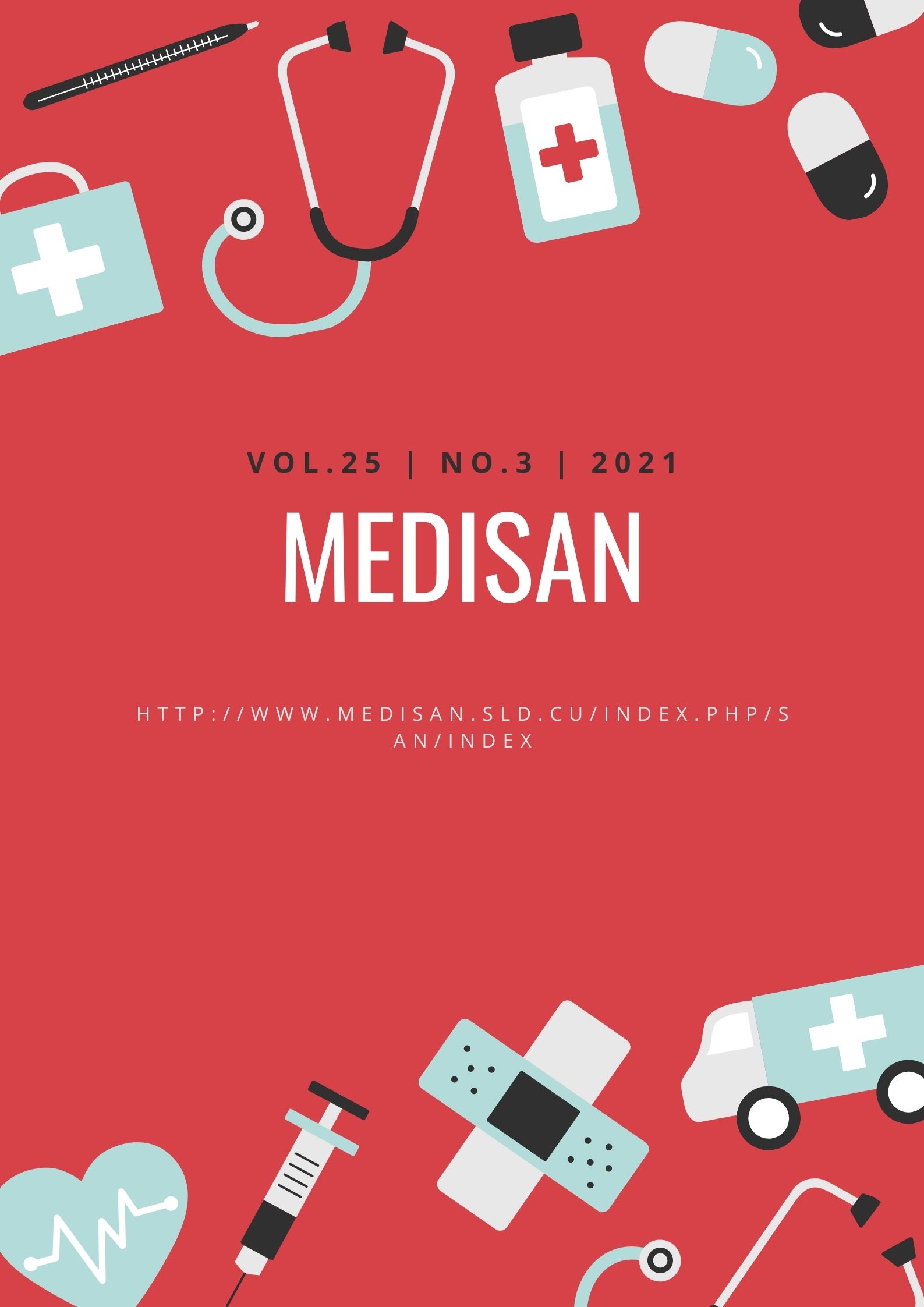Influence of physical therapy in the functional capacity of patients with ischemic cardiopathy
Keywords:
cardiovascular rehabilitation, functional capacity, risk levels, functional clases.Abstract
Introduction: Patients with a history of ischemic cardiopathy generally don´t want to abandon a physical or sport activity; on the other side, they can undoubtedly obtain benefits from a physical exercise plan which brings a better life quality.
Objective: To evaluate he functional capacity of patients with ischemic cardiopathy who have been rehabilitated with physical therapy, according to the ergometric trace.
Method: A descriptive, longitudinal and prospective study was carried out in the Physical Therapy and Rehabilitation Service from Dr. Juan Bruno Zayas Teaching in Santiago de Cuba during the biennium 2007-2019, in 41 patients who had suffered from a myocardial infarction and were included in a cardiovascular rehabilitation program. To determine the functional capacity, the cardiovascular risk level was compared to the functional class before and after the physical exercise.
Results: It was achieved to modify the ergometric response in 87.8 % after applying the rehabilitation program, while the cardiovascular state according to the risk level of the patients was modified in 68.2 % towards the low risk and the functional capacity showed an improvement of 82.9 %.
Conclusions: The implementation of a cardiac rehabilitation program was useful in most of the patients, and a significant improvement of the evaluated cardiovascular parameters was obtained, what pointed at a reestablishment of the life quality and of tolerance to efforts.
Downloads
References
2. Sosa RV, Rey Blas JR. Rehabilitación Cardíaca y Prevención Secundaria de la Cardiopatía Isquémica. En: Delcán Domínguez JL. Cardiopatía Isquémica. Madrid: ENE Ediciones; 1999. p. 1079-1110.
3. Guyton AC, Hall JE. Tratado de Fisiología Médica. 11 ed. Madrid: Elsevier; 2010.
4. ABDI A, Basgut B. An Evidence-Based Review of Pain Management in Acute Myocardial Infarction. J Cardiol Clin Res. 2016 [citado 13/04/2020];4(4):1067. Disponible en: https://www.jscimedcentral.com/Cardiology/cardiology-4-1067.php
5. Greenland P. Cardiovascular guideline skepticism vs lifestyle realism? JAMA. 2018; 319(2):117-8.
6. Matuleviciene-Anangen V, Rosengren A, Svensson AM, Pivodic A, Gudbjornsdottir S, Wedel H, et al. Glycaemic control and excess risk of major coronary events in persons with type 1 diabetes. Heart. 2017 [citado 13/04/2020];103(21):1687-95. Disponible en: https://heart.bmj.com/lookup/pmidlookup?view=long&pmid=28710186
7. Morrow DA, de Lemos JA. Stable ischemic heart disease. En: Zipes DP, Libby P, Bonow RO, Mann DL, Tomaselli GF, Braunwald E. Braunwald's Heart Disease: A Textbook of Cardiovascular Medicine. 11 ed. Philadelphia, PA: Elsevier; 2019.
8. Thanassoulis G, Williams K, Altobelli KK, Pencina MJ, Cannon CP, Sniderman AD. Individualized statin benefit for determining statin eligibility in the primary prevention of cardiovascular disease. Circulation. 2016 [citado 13/04/2020];133(16):1574-81. Disponible en: https://www.ahajournals.org/doi/10.1161/CIRCULATIONAHA.115.018383?url_ver=Z39.88-2003&rfr_id=ori:rid:crossref.org&rfr_dat=cr_pub%20%200pubmed
9. Mcphee SJ, Ganong WF. Fisiopatología Médica: una introducción a la medicina clínica. 5 ed. México: El Manual Moderno; 2007.
10. Thompson PD, Ades PA. Exercise-based, comprehensive cardiac rehabilitation. En: Zipes DP, Libby P, Bonow RO, Mann DL, Tomaselli GF, Braunwald E. Braunwald's Heart Disease: A Textbook of Cardiovascular Medicine. 11 ed. Philadelphia, PA: Elsevier; 2019.
11. Joshua W. Knowles, Euan A. Ashley. Cardiovascular disease: The rise of the genetic risk score. PLOS Medicine 2018 Mar 30;15(3):e1002546.
12. Piepoli MF, Hoes AW, Agewall S, Albus C, Brotons C, Catapano AL, et al. 2016 European Guidelines on cardiovascular disease prevention in clinical practice: The Sixth Joint Task Force of the European Society of Cardiology and other societies on cardiovascular disease prevention in clinical practice. Eur Heart J. 2016 [citado 13/04/2020];37(29):2315-81. Disponible en: https://watermark.silverchair.com/ehw106.pdf
13. Ridker PM, Libby P, Buring JE. Risk markers and primary prevention of coronary heart disease. En: Zipes DP, Libby P, Bonow RO, Mann DL, Tomaselli GF, Braunwald E. Braunwald's Heart Disease: A Textbook of Cardiovascular Medicine. 11 ed. Philadelphia, PA: Elsevier; 2019.
14. Whelton PK, Carey RM, Aronow WS, Casey DE, Collins KJ, Dennison Himmelfarb C, et al. 2017 ACC/AHA/AAPA/ABC/ACPM/AGS/APhA/ASH/ASPC/NMA/PCNA Guideline for the Prevention, Detection, Evaluation, and Management of High Blood Pressure in Adults: A Report of the American College of Cardiology/American Heart Association Task Force on Clinical Practice Guidelines. Hypertension. 2018 [citado 13/04/2020];71:13–115. Disponible en: https://www.ahajournals.org/doi/epub/10.1161/HYP.0000000000000065
15. Karmali KN, Lloyd-Jones DM, van der Leeuw J, Goff DC, Rahimi K, Yusuf S, et al. Blood pressure lowering treatment strategies based on cardiovascular risk versus blood pressure: A meta-analysis of individual participant data. PLoS Med. 2018 [citado 13/04/2020];15(3):e1002538. Disponible en: https://www.ncbi.nlm.nih.gov/pmc/articles/PMC5860698/
16. Leening MJG, Cook NR, Ridker PM. Should we reconsider the role of age in treatment allocation for primary prevention of cardiovascular disease? Eur Heart J. 2017;38(20):1542-7.
17. Ciaccio EJ, Lewis SK, Biviano AB, Iyer V, Garan H, Green PH. Cardiovascular involvement in celiac disease. World J Cardiol. 2017;9(8):652-66.
18. Chukwudozie A, White H. Las intervenciones de ejercicios físicos ayudan a mejorar la autoestima en niños y jóvenes en el corto plazo, pero se requieren más investigaciones. Caracas: The Campbell Collaboration; 2018.
19. Boersma E; The Primary Coronary Angioplasty vs. Thrombolysis Group. Does time matter? A pooled analysis of randomized clinical trials comparing primary percutaneous coronary intervention and in-hospital fibrinolysis in acute myocardial infarction patients. Eur Heart J 2016; 27(7):779-88.
Published
How to Cite
Issue
Section
License
All the articles can be downloaded or read for free. The journal does not charge any amount of money to the authors for the reception, edition or the publication of the articles, making the whole process completely free. Medisan has no embargo period and it is published under the license of Creative Commons, International Non Commercial Recognition 4.0, which authorizes the copy, reproduction and the total or partial distribution of the articles in any format or platform, with the conditions of citing the source of information and not to be used for profitable purposes.





